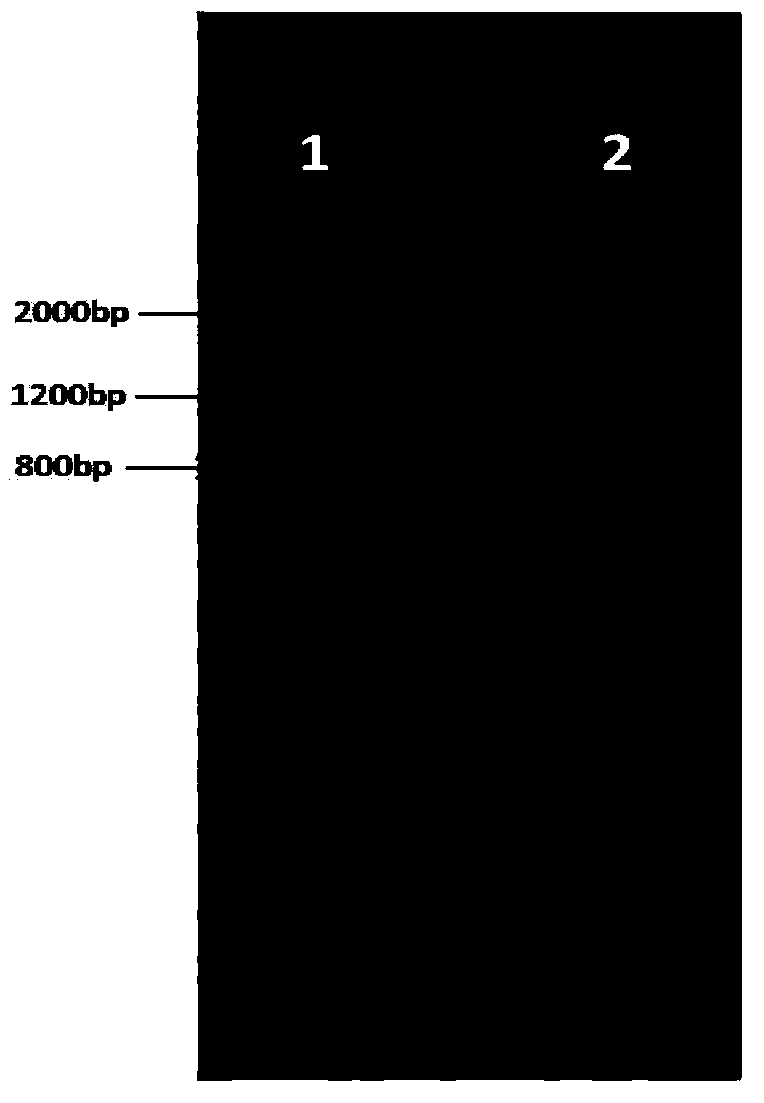Cold induced promoter p-LTT1 for rice and application thereof
A technology of promoters and DNA molecules, applied in the field of rice cold-inducible promoter p-LTT1, can solve problems such as genetic bottlenecks, and achieve broad application and market prospects
- Summary
- Abstract
- Description
- Claims
- Application Information
AI Technical Summary
Problems solved by technology
Method used
Image
Examples
Embodiment 1
[0029] Example 1, Discovery of rice cold-inducible promoter p-LTT1
[0030] 1. Discovery of cold-induced genes
[0031] Firstly, the cold-tolerant rice line IL112 and the control parent Guichao 2 rice were used as materials to carry out microarrays (the microarrays were rice whole genome microarrays from Affimetrix Company ( Rice Genome Array), Cat. No.: 900599) hybridization, and on the basis of chip data analysis, combined with comparative genomics analysis, to screen cold tolerance-related genes, after genome comparison and cold tolerance correlation analysis, the cold tolerance gene LTT1 was finally obtained. Under cold treatment conditions, the expression level of this gene in rice cold-tolerant line IL112 was significantly increased (see figure 1 ), is a cold-inducible gene.
[0032] 2. Discovery of the cold-inducible promoter p-LTT1
[0033] Primers T1GUSF and T1GUSR were designed using primer3 primer design software, and restriction endonuclease SalI and HindIII re...
Embodiment 2
[0040] Example 2, functional verification of p-LTT1
[0041] 1. Construction of plant expression vectors
[0042] 1. Using the genomic DNA of the cold-tolerant rice line IL112 as a template, perform PCR amplification with a primer pair composed of T1GUSF and T1GUSR to obtain a PCR amplification product.
[0043] PCR reaction conditions: first 94°C for 5min; then 94°C for 30sec, 58°C for 45sec, 72°C for 2min, a total of 30 cycles; finally 72°C for 10min.
[0044] 2. Digest the PCR amplification product obtained in step 1 with restriction endonucleases SalI and HindIII, and recover the digested product.
[0045] 3. The plant expression vector pCambia1381 was double digested with restriction enzymes SalI and HindIII, and the vector backbone (about 10650bp) was recovered.
[0046] 4. Ligate the digested product of step 2 with the vector backbone of step 3 to obtain the recombinant plasmid pCambia1381-pLTT1. According to the sequencing results, the structure of the recombinant pla...
PUM
 Login to View More
Login to View More Abstract
Description
Claims
Application Information
 Login to View More
Login to View More - R&D
- Intellectual Property
- Life Sciences
- Materials
- Tech Scout
- Unparalleled Data Quality
- Higher Quality Content
- 60% Fewer Hallucinations
Browse by: Latest US Patents, China's latest patents, Technical Efficacy Thesaurus, Application Domain, Technology Topic, Popular Technical Reports.
© 2025 PatSnap. All rights reserved.Legal|Privacy policy|Modern Slavery Act Transparency Statement|Sitemap|About US| Contact US: help@patsnap.com



